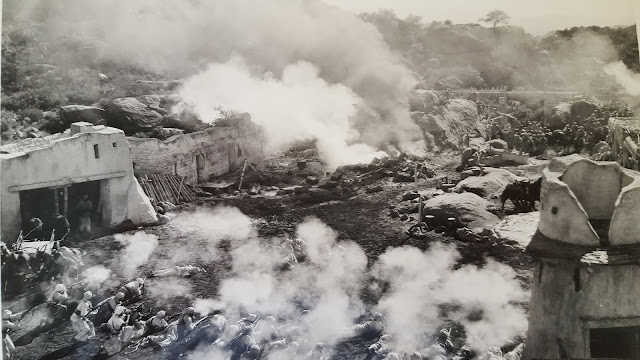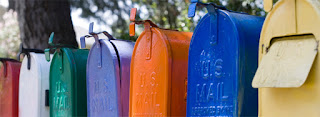If I had to pick one TV series to get my Iverson fix, I'd probably go with "The Roy Rogers Show
Roy was an iconic Western hero, and even today, long after his death in 1998 at age 86, he defines cool. The legacy Roy left behind exhibits a genuine quality that transcends the silliness of 1950s TV and rises above the amateurish production values that typified the TV Westerns of the period — including his own show.
Roy, Dale and Trigger — publicity still
Roy Rogers and Dale Evans lived in Chatsworth around the time their TV show was on the air, so Iverson was their home court. And they made great use of the place.
Here's a shot of Roy and Trigger in front of Raccoon Rock on the Lower Iverson in Season 5. The series filmed consistently at Iverson throughout its six-season run on NBC.

Above is a screen shot from the show that includes Batman Rock at the far right, along with a small wooden building that was located near Saddlehorn Relay Station, north of Garden of the Gods. This little building turns up in many productions, and I refer to it in my research as Saddlehorn Shed.
A lot of temporary buildings went up in that area over the years for various productions, and John Ford made ample use of the area for "Stagecoach" in 1939. (Click here for a detailed post about Iverson locations in "Stagecoach.") Saddlehorn Shed was off by itself, more or less east of the widely filmed Saddlehorn Relay Station.

A lot of temporary buildings went up in that area over the years for various productions, and John Ford made ample use of the area for "Stagecoach" in 1939. (Click here for a detailed post about Iverson locations in "Stagecoach.") Saddlehorn Shed was off by itself, more or less east of the widely filmed Saddlehorn Relay Station.

A number of buildings and other features in the area are named after nearby Saddlehorn Rock, above — still found at the site, amid some condos, and still boasting its distinctive saddlehorn shape.

"The Roy Rogers Show": Outlaw Rock
This screen shot from "The Roy Rogers Show" features Outlaw Rock, which includes a small but distinctive marker rock that I used to call the Finch, when I didn't know any better. It's the rock at the top of the shot with what looks like a beak, pointing toward the left of the frame.
The marker rock is circled in this version of the shot. Outlaw Rock is located in the Above Nyoka area of the Lower Iverson, part of the same cluster as Chewbacca, which is around the corner to the right, out of the shot. My guess is that the small pile of rubble in the lower left corner of the shot is debris from Hangover Shack. The shack was almost always in disrepair, but survived in some form long after most of the structures of Iverson's filming era, being used for filming as late as 1996.

This photo is a distant shot of part of Outlaw Rock, including the small, pointed marker rock — the Finch, if you will — from a recent Iverson visit.
































